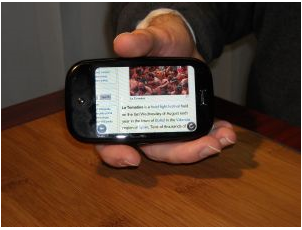 I think anyone who’s played with an iPhone will agree that it’s a great toy, and has the “I want one” factor. Unsurprisingly, all the major mobile manufacturers are following suit and churning out touchscreen phones.
I think anyone who’s played with an iPhone will agree that it’s a great toy, and has the “I want one” factor. Unsurprisingly, all the major mobile manufacturers are following suit and churning out touchscreen phones.
There’s no doubt that being able to browse the web wherever you are is useful, and a touchscreen is a good interface for this, but I’m not convinced it makes a good phone. Without a physical keypad of some sort you can no longer SMS by touch, whether they have haptic (vibrating) touch features or not. There is no way that a touchscreen keyboard will be as easy to use as a physical one: it will require human evolution for that to be the case. We shouldn’t have to wait for human evolution to catch up with touchscreens
My other criticism of this current generation of touch phones is size – I still don’t carry a ‘man bag’, so my phone goes in my pocket. Blackberry or iPhone – they’re too big. It’s surprising that the smallest phone I had (a Nokia 6210, if I remember correctly) was in 2003. They have been growing ever since. Do I have to start wearing clown trousers?
Looking through user reviews on Amazon, touch screens seem to get pretty average scores. The iPhone gets 3 or 4/5, and the Samsung Omnia and Blackberry Storm both manage 3 to 3.5/5. Maybe 3/5 isn’t a total disaster, but there are plenty of “old school” phones that get 5/5 reviews.
I’m not against touch screens particularly, but I think there’s some way to go before they are done right. The Android ‘Magic’ phone’s keyboard is OK, but I think a better compromise would be a touchscreen keyboard with a physical traditional keypad. Maybe the Palm Pre will be an improvement – though things are rarely perfect on a first generation machine. Until touchscreen technology can give some tactile responses so your fingers can feel their way around, I’m going to want a physical keypad.

